Ten Innovators to Watch in 2021
These visionaries are imagining an exciting future with chicken-less eggs, self-piloting ships and more
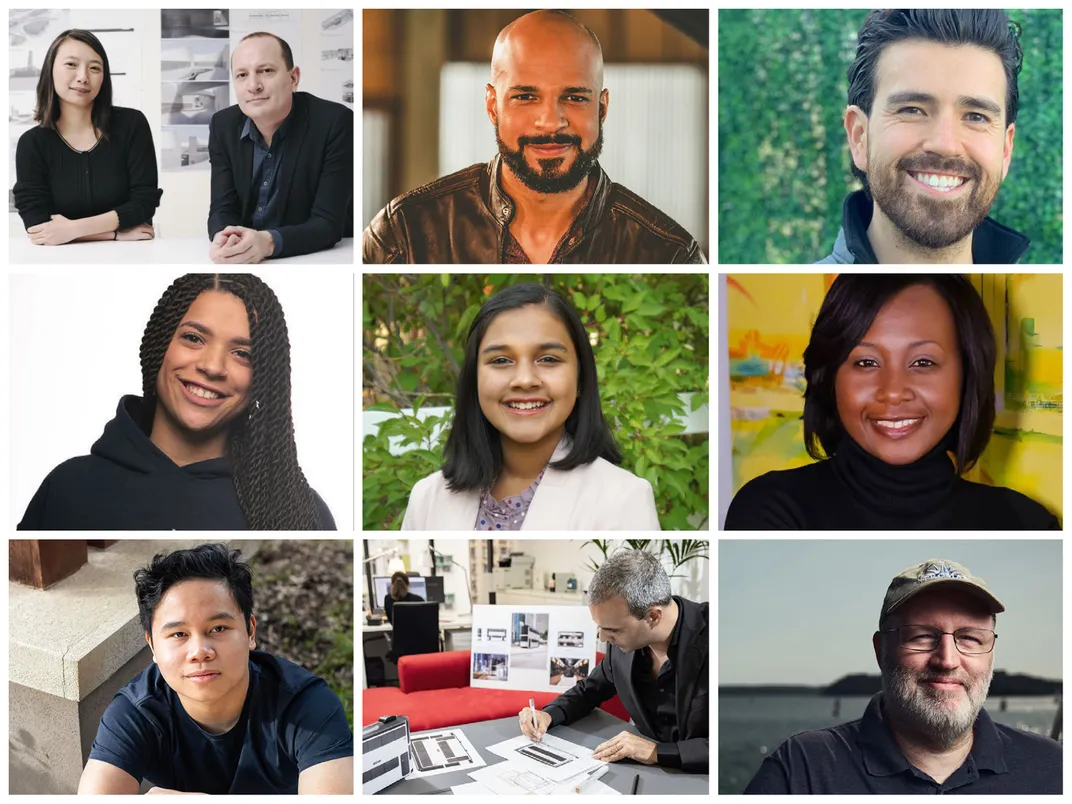
This past year left us with no shortage of incredible innovations, chief among them Covid-19 vaccines. Following a harrowing 2020, we're excited to see how innovators continue to push the envelope and bring forth what they think the world needs. From celebrating and honoring black history to improving the mental health of K-12 students, we're keeping our eyes on these ten groundbreakers as they share their visions with the world.
Chicken-less Egg Connoisseur Arturo Elizondo
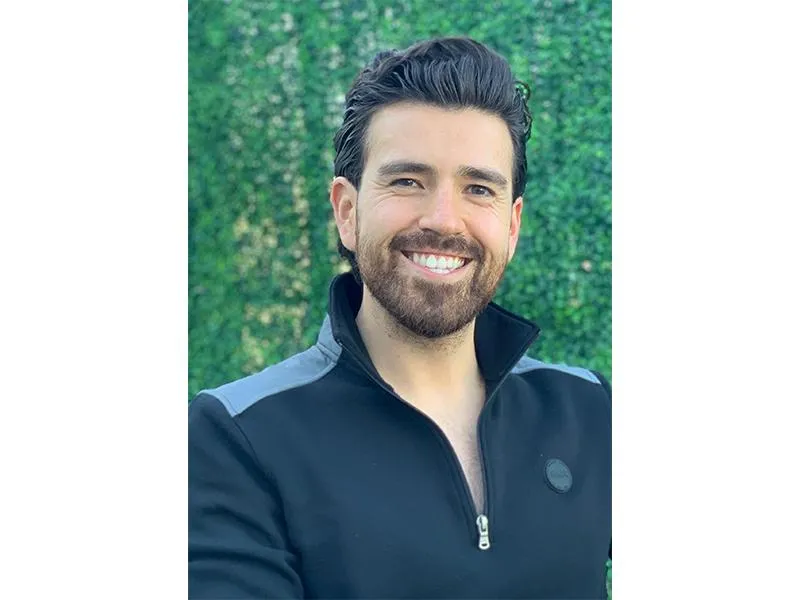
"Like any good Mexican, I had two eggs for breakfast every morning, and like any good Texan I had my barbeque every Sunday," says Arturo Elizondo. But when he learned about the devastating impacts that livestock has on the environment, he set out to find a better, more sustainable way to produce animal protein. In 2014, he co-founded Clara Foods with cell biologist David Anchel with a mission to take animals out of animal proteins.
Similar to how brewers use yeast to convert sugar into alcohol for beer, Clara Foods uses yeast and sugar to produce animal protein. Specifically, Elizondo and his team are working to produce egg proteins—one of the most challenging to find alternatives for. One trillion eggs are consumed across the globe each year, but it takes a whopping 600 gallons of water to produce a dozen eggs, he says. Since they're so versatile and globally loved, Clara Foods is offering a cleaner alternative so that people can still enjoy eggs in all their culinary forms without the tremendous environmental impact.
Clara Foods has been knee-deep in research and development for the last six years, but the company is officially coming out of their "eggshell" in 2021 when they launch the world's first egg protein made without a chicken, Elizondo says.
Problem-Solving Wunderkind Gitanjali Rao

As a 15-year-old, Gitanjali Rao is the youngest innovator on our list, but she's certainly one to watch. She's already tackling some of the greatest problems affecting current generations: lack of access to clean water, opioid addiction and cyberbullying.
After hearing about the water crisis in Flint, Michigan, Rao was shocked to learn that people in the United States and beyond still don't have access to safe, clean water. In response, she invented Tethys—a sensor that can detect lead in water and upload results from the water sample to an app, allowing users to quickly and affordably see if water is safe to drink. She's also worked to address the opioid crisis by developing Epione, a way to diagnose prescription opioid addictions for patients at the onset of addiction, after hearing about a family friend who developed an addiction after a car accident. And to address cyberbullying—a problem especially relevant to her age group—Rao developed Kindly, an artificial intelligence-powered software that detects hurtful or harmful messages and then prompts users to rephrase what they send. Her thoughtful, problem-solving innovations earned her the title of TIME's 2020 Kid of the Year.
"My motivation to solve problems in society started in a very simple manner: to solve problems that we face on a daily basis," she says. "I try my best to understand them and look for ways to address them. I am not always successful, but the few times [I've succeeded,] I feel like I have contributed in some way.”
To inspire others to innovate, Rao has connected with about 35,000 students across four continents and has more events planned in the coming months. As she moves forward in 2021, Rao says she has more ideas in the works and that she'll continue developing her current innovations as she searches for the partners to help her out.
Storytelling Composer Barron Ryan
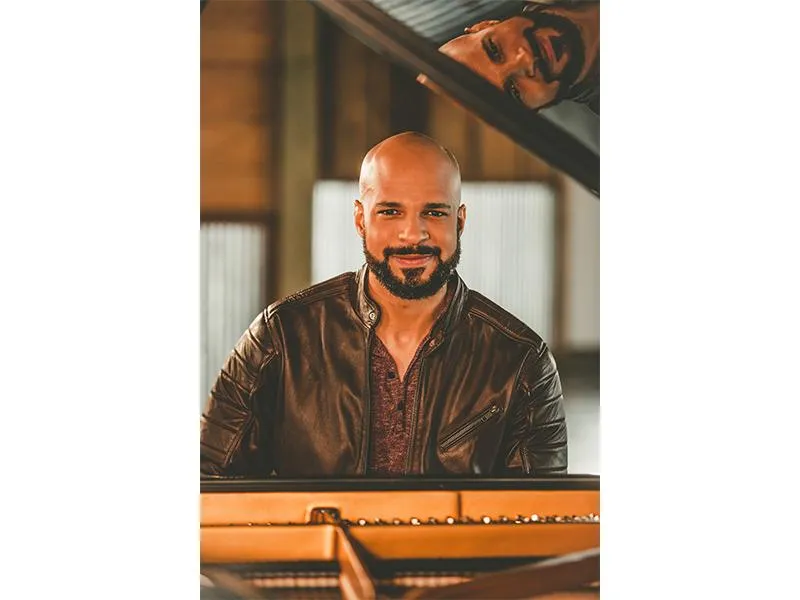
On May 31, 1921, a mob of white residents attacked the Greenwood District, a predominantly black neighborhood, in Tulsa, Oklahoma, in what's known as the Tulsa Race Massacre. The attack—one of the worst acts of racial violence in American history—continued through the next day as the mob killed more than 300 black Tulsans, displaced 10,000 others and burned more than 35 city blocks to the ground.
To commemorate the 100-year anniversary of the Tulsa Race Massacre, Chamber Music Tulsa commissioned composer and performer Barron Ryan to tell the story of the tragedy through a piano trio. As a Tulsa native, Ryan says that it's important for him to tell this story—a story that needs to be remembered. "It's an integral part of who I am, and I'm honored to do it," he says.
"Music can tell a story without using words, [and it] has an unparalleled ability to communicate" Ryan says, which is what he aspires to do with his trio. In composing the piece, he looked through firsthand accounts of the massacre. He read about a woman who hid with her daughter and read psalms as the attack raged on. Psalm 88:3 spoke to Ryan, and it ultimately inspired the melody. One of the verses reads, "My soul is full of troubles," which Ryan borrowed as the title of his trio.
He hopes that his music inspires people to reflect on the Tulsa Race Massacre and to be courageous—to do what’s right and not simply what is easy, he says. "I'm hoping that it's well received, and that we remember our history as Tulsans and learn the right lessons and not repeat something like this again."
Transit Trailblazer Andrea Ponti
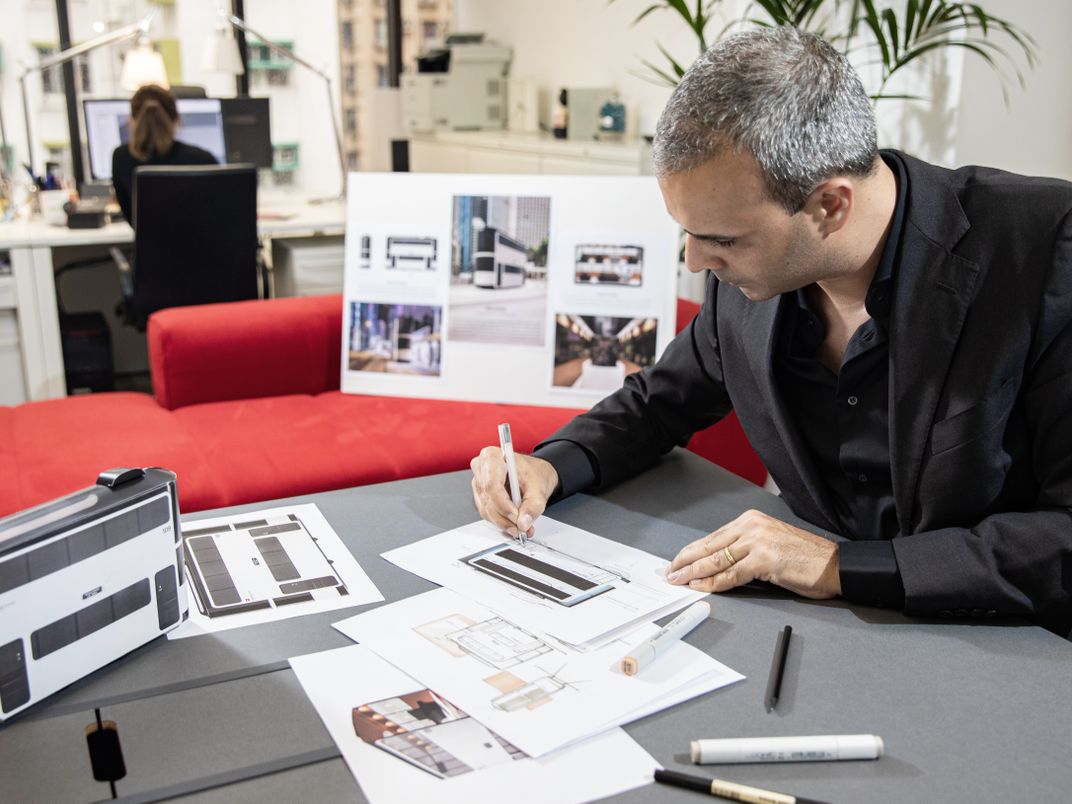
The Covid-19 pandemic brought public transportation to a screeching halt as people who had the means to travel in their own private vehicles opted to do so. Andrea Ponti, the founder and director of Ponti Design Studio, took the opportunity to re-think and re-plan how we get around. Inspired by social distancing, he developed Island, an electric tram designed for a post-pandemic Hong Kong, the city where he resides.
"When the pandemic took over Hong Kong, many people turned to private transport causing a dramatic increase in traffic, pollution and noise," he says. "What makes Island attractive is that it helps to solve all those problems. The bottom line is technology needs good design in order to be efficient and accessible to most people, and I think Island might be an example of that."
Instead of sitting in rows, the tram's seats are organized in circles, or "islands," seating people with their backs towards each other so they can look out the window instead of facing others. "To me that is a safer way to commute and a fun way to take in the city sights and see Hong Kong from a different viewpoint," he says. Plus, the tram is electric and driverless, making it eco-friendlier and more efficient.
"As a designer I really like the challenge of re-imagining products and services that we often take for granted and that can be greatly impacted by social changes—in this case re-designing trams at the time of social distancing in a metropolis like Hong Kong where social distancing is hard to practice," he says.
Ponti started developing Island in March 2020 and has since modeled the tram and produced a number of prototypes. Moving forward in 2021, he is working to scale the protypes, move into the testing phase and secure a partner to produce Island.
Honoring Black History with Anitra Belle Henderson
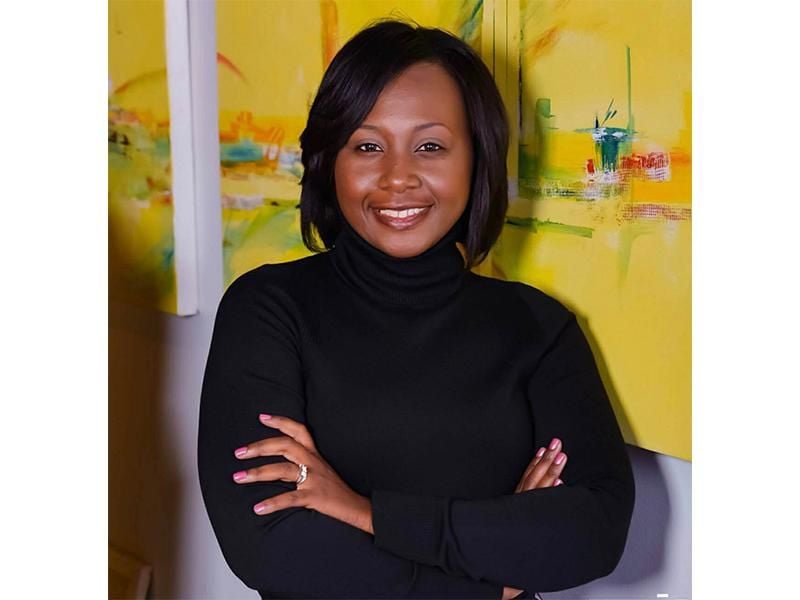
In 1860, a plantation owner smuggled in a shipload of 110 African people to Alabama on the Clotilda, the last known slave ship to arrive in the United States, decades after the U.S. had banned the importation of enslaved people. When enslaved people were freed in 1865, survivors of the Clotilda couldn't afford to return to Africa, so they founded Africatown instead, a bustling town rooted in their homelands and cultures.
After years of searching for the long-lost Clotilda, a team of historians and archaeologists finally discovered it at the bottom of Alabama's Mobile River in 2019. Now, the City of Mobile will open a heritage house in the summer of 2021 to tell the story of the Clotilda's survivors and of Africatown.
"We are excited to help the community tell their story," says Anitra Belle Henderson, the executive director of communications and external affairs for the City of Mobile and the lead on all the Africatown projects. "Our goal is for visitors to understand more about those who were enslaved. They have a name and a story."
The heritage house is designed to be an immersive experience. Visitors will feel the waves of the ocean like the enslaved people felt on their voyage, read stories of the slave trade and be introduced to the survivors of the Clotilda. They'll also be able to visit Africatown, where many descendants of the Clotilda's survivors still reside.
"Each detail of the heritage house was designed with reverence to the ancestors, descendants and the community," Belle Henderson says. "Those who are curious about African culture can visit an African community on American soil—a community that was built with hope and promise."
"The many stories show the diverse brilliance of black people," she says. "Since the [discovery] of the Clotilda there has been a new excitement in the community. Educating people about Africatown's past will definitely create a bright future for a community that so deserves the attention it is receiving."
Nautical Visionary Brett Phaneuf

In April 2021, the Mayflower Autonomous Ship, one of the world's first full-sized self-navigating ships, will set sail from the United Kingdom's Plymouth Harbor and traverse the Atlantic Ocean to Cape Cod, Massachusetts. It will retrace the voyage made by the original Mayflower in 1620 that brought Pilgrims to New England, but instead of looking back at 400 years of history, it represents what the next wave of nautical advances will look like.
The Mayflower Autonomous Ship is a collaboration between the marine research organization ProMare and IBM, which developed the ship's artificial intelligence systems that will allow it to navigate unassisted across the ocean. The Mayflower team is hoping to revolutionize ocean research by creating an affordable option for scientists to study the ocean without necessarily being on board a ship. Without needing to worry about the logistics for housing people on board, like sleeping, eating and sanitation, the ship can accommodate more technology, like cameras and sensors, and stay out at sea longer.
"If it works as designed, then it will substantially drive down the cost of collecting data at sea," says Phaneuf, a co-founder and co-director of the Mayflower Autonomous Ship project. "This will lead to [a] better understanding of our oceans and climate."
Phaneuf's biggest hope for the Mayflower is that it makes it across the ocean and sparks the conversation about how autonomous ships can be used to study the high seas. During this first voyage, the ship will collect meteorological and oceanographic data as well as water samples to study microplastic distribution.
Student Advocate Samantha Pratt
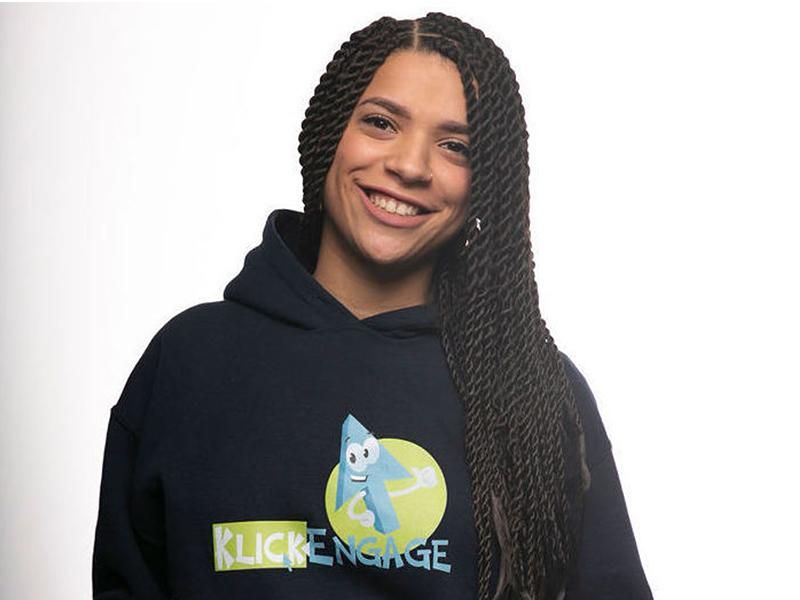
Two thirds of all U.S. youth face at least one trauma by age 16 that can stem from poverty, racism, domestic or community violence, or substance abuse, says Samantha Pratt, the CEO and founder of KlickEngage.
"Students carry heavy emotional backpacks into the classroom every day that they cannot put down," she says. "I was teaching high-need students in an overcrowded classroom and could not check in with each of my students every day in order to address their issues. Out of urgent need, I decided that I had to find a way to streamline student self-report."
To do so, Pratt designed KlickEngage—an app that allows users to self-report their mental state each day by completing a two-minute survey. The app, which has reached thousands of kids, then provides students with targeted coping mechanisms while delivering real-time data to educators so that they can identify and supports students carrying heavy emotional loads, Pratt says. Schools have the ability to make a huge impact for students by providing health services and resources, but they're often limited and underfunded.
"By directly serving students, teachers and schools, we limit the impacts of adverse experiences on school engagement in early years of education so that there is a higher likelihood of student success in later years, breaking the cycle of trauma and poverty," Pratt says.
Students are still facing adversities, plus the compounded issues brought on by the Covid-19 pandemic, such as unemployment, food insecurity and fear-based anxiety, Pratt says. Since KlickEngage is able to be adapted for a physical or virtual learning environment, it can help educators check in with students, even from a distance. In 2021, KlickEngage is planning to grow its impact and reach more classrooms.
Pandemic-Inspired Architects Jing Liu and Florian Idenburg
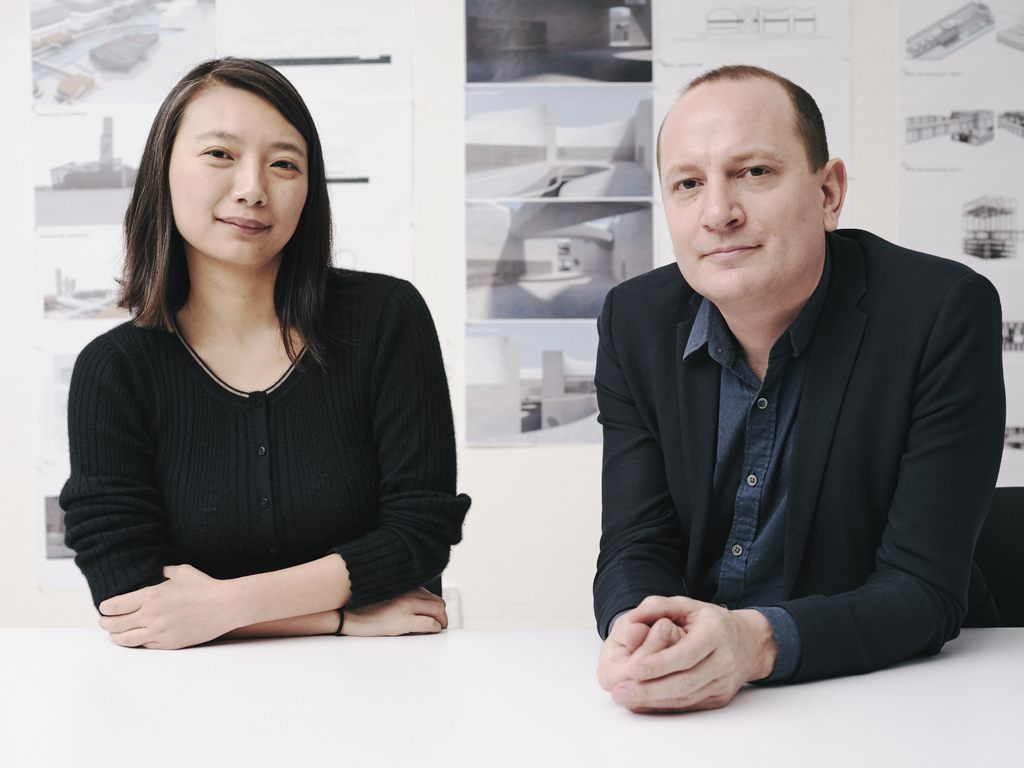
In 2020, homes transformed into all-in-one offices, gyms, daycares, classrooms, vacation destinations and restaurants as people's lives became confined to their residences. As a result, people noticed just how important their home environment is to their mental and emotional wellbeing, say Jing Liu and Florian Idenburg, the founding partners of SO–IL, an architecture and design firm.
At the outset of the Covid-19 pandemic, Liu and Idenburg were in the beginning stages of designing a new 30-unit residential building in Brooklyn. They also found themselves adjusting to living and working from home with their two daughters, and they say that experience helped shape the design for the new building, to be completed in 2022. Now that people are home all the time, Liu and Idenburg needed to create a space that was both multi-functional and comfortable for residents. For example, they moved bedrooms to opposite sides of the apartment to muffle noise and distractions, which are typically clustered together. They also incorporated multiple outdoor spaces for each unit, creating easy access to fresh air and sunshine.
The pandemic has highlighted what people really need in their homes, and architecture trends in the future will reflect that, they say. "The main lesson to take away is that the lifespan of a building will be longer than the interval between pandemics," they say. "From a sustainability standpoint, we should endeavor to build buildings that last 'forever.' It means we need to design for future pandemics."
Mosquito-Trapping Mastermind Kennyjie
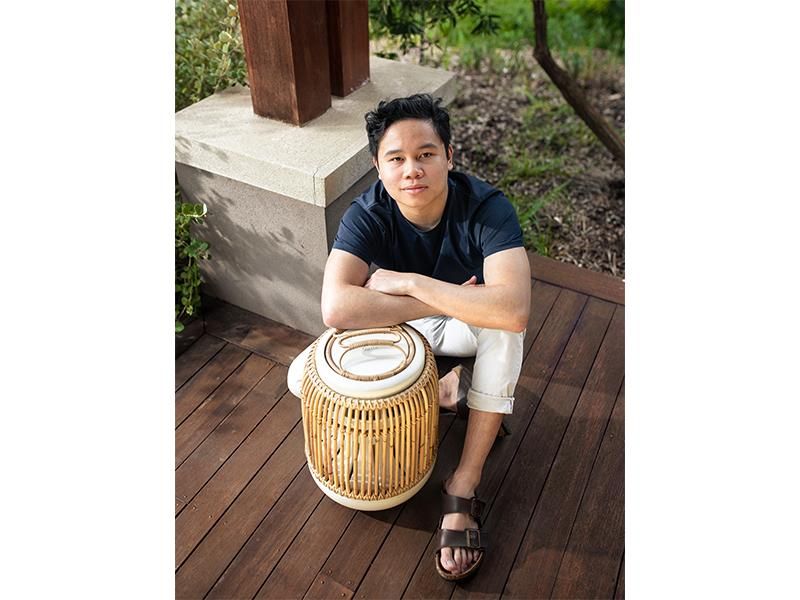
When industrial designer Kennyjie (he prefers to go by just his first name) was 12 years old, he contracted dengue fever—a flu-like disease transmitted by mosquitos—while living in Indonesia. "Being able to afford long hospital care, I was one of the privileged kids who walked out alive," he says. Mosquito-borne disease prevention has remained an issue close to his heart, and it's the driving force behind his new innovation, Quito.
While visiting Bali, Kennyjie noticed that the mosquito prevention tactics were inconvenient and ineffective, so he set out to design his own. Quito, which made the International Top 20 for the James Dyson Award in 2020, uses a simple chemical reaction to produce carbon dioxide and an artificial human odor to attract mosquitoes, and then it vacuums them into a chamber. By luring mosquitoes in instead of repelling them, Quito reduces their local population and the chance of disease transmission. It's designed to be placed in tropical resorts to lessen the likelihood of an outbreak as people travel in and out of the region.
Kennyjie traveled through multiple Indonesian villages to ensure that Quito's design is informed by the local culture, economy and climate so that it fits into the "geographical context in which it is needed," he says. This year, Kennyjie will continue running more tests from his home in Melbourne, Australia, until international borders are open and he can start pilot tests in Indonesia.
/https://tf-cmsv2-smithsonianmag-media.s3.amazonaws.com/accounts/headshot/rasha.png)
/https://tf-cmsv2-smithsonianmag-media.s3.amazonaws.com/accounts/headshot/rasha.png)